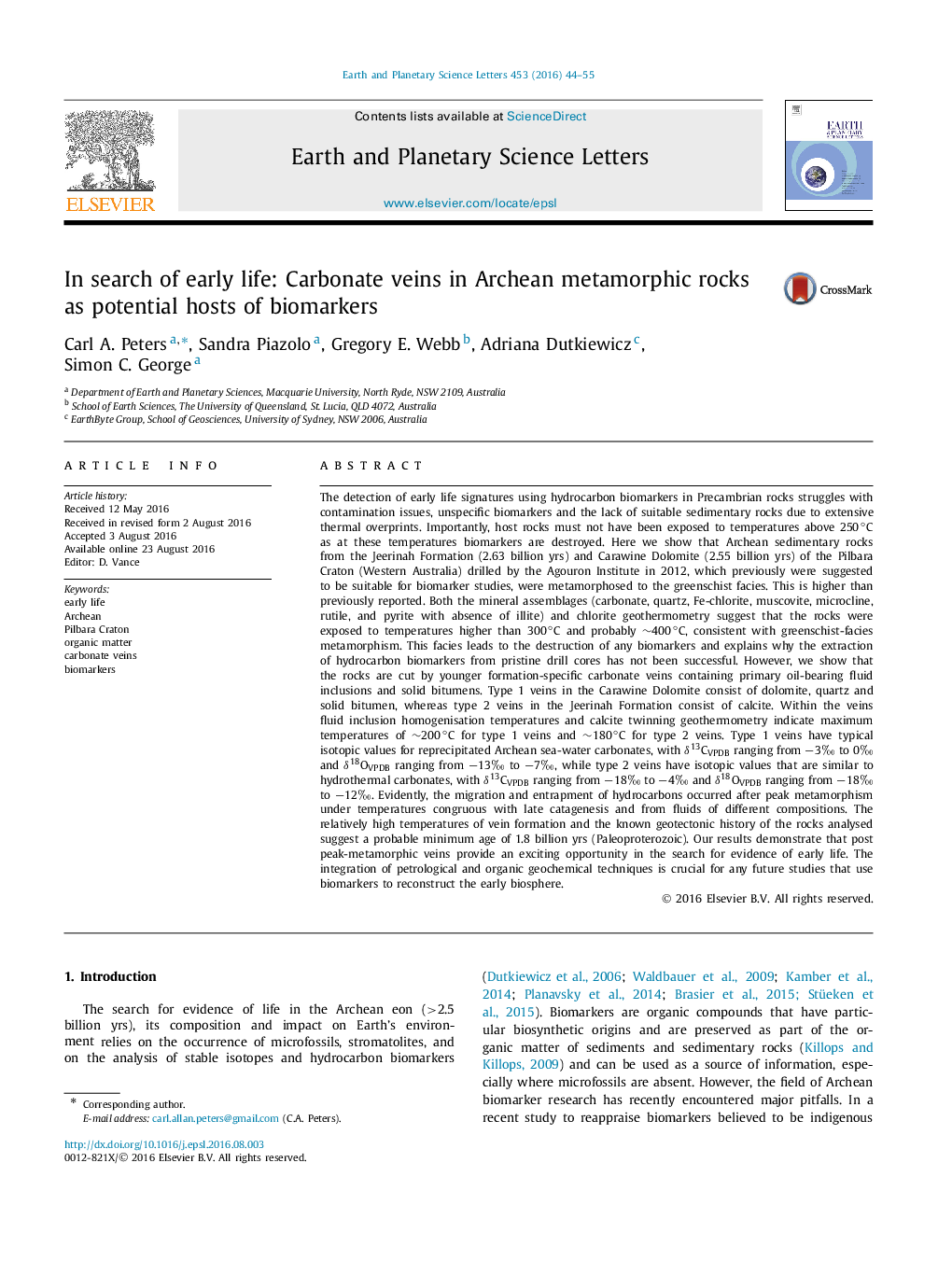| Article ID | Journal | Published Year | Pages | File Type |
|---|---|---|---|---|
| 6427139 | Earth and Planetary Science Letters | 2016 | 12 Pages |
â¢Metamorphic grade of Pilbara sedimentary rocks is higher than known previously.â¢The rocks are cut by carbonate veins which postdate peak-metamorphism.â¢The veins are likely Paleoproterozoic and contain bitumen and rare oil inclusions.â¢The organic material has the potential to yield pristine biomarkers.
The detection of early life signatures using hydrocarbon biomarkers in Precambrian rocks struggles with contamination issues, unspecific biomarkers and the lack of suitable sedimentary rocks due to extensive thermal overprints. Importantly, host rocks must not have been exposed to temperatures above 250â°C as at these temperatures biomarkers are destroyed. Here we show that Archean sedimentary rocks from the Jeerinah Formation (2.63 billion yrs) and Carawine Dolomite (2.55 billion yrs) of the Pilbara Craton (Western Australia) drilled by the Agouron Institute in 2012, which previously were suggested to be suitable for biomarker studies, were metamorphosed to the greenschist facies. This is higher than previously reported. Both the mineral assemblages (carbonate, quartz, Fe-chlorite, muscovite, microcline, rutile, and pyrite with absence of illite) and chlorite geothermometry suggest that the rocks were exposed to temperatures higher than 300â°C and probably â¼400â°C, consistent with greenschist-facies metamorphism. This facies leads to the destruction of any biomarkers and explains why the extraction of hydrocarbon biomarkers from pristine drill cores has not been successful. However, we show that the rocks are cut by younger formation-specific carbonate veins containing primary oil-bearing fluid inclusions and solid bitumens. Type 1 veins in the Carawine Dolomite consist of dolomite, quartz and solid bitumen, whereas type 2 veins in the Jeerinah Formation consist of calcite. Within the veins fluid inclusion homogenisation temperatures and calcite twinning geothermometry indicate maximum temperatures of â¼200â°C for type 1 veins and â¼180â°C for type 2 veins. Type 1 veins have typical isotopic values for reprecipitated Archean sea-water carbonates, with δ13CVPDB ranging from â3â° to 0â° and δ18OVPDB ranging from â13â° to â7â°, while type 2 veins have isotopic values that are similar to hydrothermal carbonates, with δ13CVPDB ranging from â18â° to â4â° and δ18OVPDB ranging from â18â° to â12â°. Evidently, the migration and entrapment of hydrocarbons occurred after peak metamorphism under temperatures congruous with late catagenesis and from fluids of different compositions. The relatively high temperatures of vein formation and the known geotectonic history of the rocks analysed suggest a probable minimum age of 1.8 billion yrs (Paleoproterozoic). Our results demonstrate that post peak-metamorphic veins provide an exciting opportunity in the search for evidence of early life. The integration of petrological and organic geochemical techniques is crucial for any future studies that use biomarkers to reconstruct the early biosphere.
